I could probably write dozens of posts about our meeting this last Saturday at the Fort Worth Botanic Gardens. Instead, I think I'll write two or three posts, focusing on a couple of topics. This post, is just some picture highlights from the conservatory.
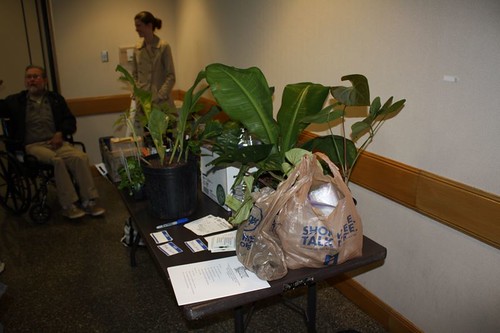 |
| Plant swap table beginning to fill with plants |
After a morning full of talks and a nice lunch from Jason's Deli, we held a plant swap among those who attended. There were so many plants that they overflowed the table and were spread out on the floor.
Philodendron, Monstera, Rhaphidophora, Anthurium, Amorphophallus, and even some
Begonia and Orchids were available for trade. It was a gigantic free-for-all and everyone benefited.
 |
| Urospatha in bloom |
Out in the hallway by the entrance to our meeting room, the Fort Worth Botanic Gardens had on display a beautiful and tall (approximately 7 foot)
Urospatha in bloom. This was an incredible plant with uniquely marked stems and an amazing bloom, whose spathe curved away like in an elegant arc.
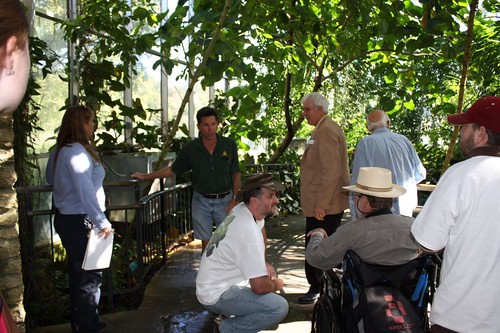 |
| Great group of plant friends beginning a tour at the FWBG Conservatory |
There were about 15 people in attendance and everyone really enjoyed themselves. Some of us knew each other from previous meetings and email discussions and others were meeting for the first time. There was even one long-time IAS member who has been a well-known figure in Aroids for 30 years or more.
 |
| Crepuscular rays shining into the conservatory. It felt like the Garden of Eden. |
The conservatory at the FWBG is very well kempt. The plants are in great condition and there is a nice collection of Aroids, as well as several other families of plants that I like to grow (like Marantaceae).
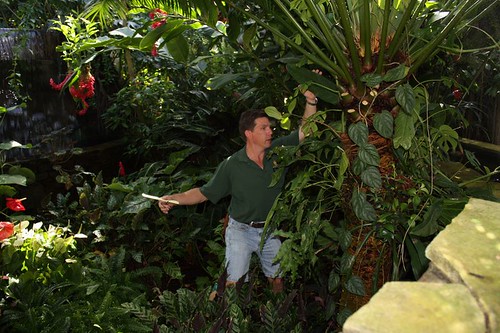 |
| Our hands-on tour guide, John Langevin, showing off a plant |
We were given a guided tour by John Langevin, who was generous enough to offer several of us cuttings or small plants from different parts of the collection, contributing lots of plants to our plant swap. He was very knowledgeable about the collection and made the tour enjoyable.
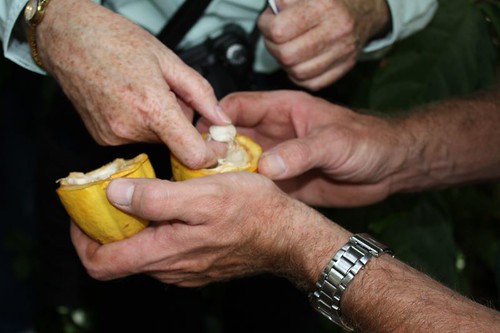 |
| Fruit and seeds from Theobroma cacao |
John removed one of the fruits from the chocolate tree (
Theobroma cacao) and cut it open so that we could taste the pulp which surrounds the seeds. I thought I smelled something resembling chocolate when he opened the fruit, but what I tasted was very different. The pulp had more of a mild citrus taste with the texture of a slimy banana. I brought two seeds home with me and will see if I can get them to germinate.
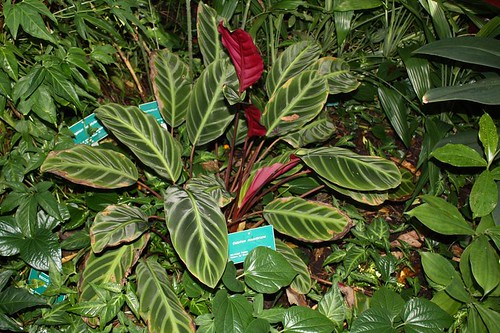 |
| Calathea ecuadoriana |
I knew from my previous visit that the conservatory has a really nice collection of Marantaceae, but I was surprised to see a species of
Calathea that I hadn't seen before.
Calathea ecuadoriana looks very similar to
Calathea zebrina and
Calathea warscewiczii, which are already hard enough to separate! They all have rich, deeply-colored, velvety leaves of green and purple.
 |
| Beautiful pendant Anthurium |
There were a number of nice
Anthuriums growing in the conservatory. One of my favorites was the simple pendant
Anthurium pictured above. I like the long, slender leaves of the pendant
Anthuriums.
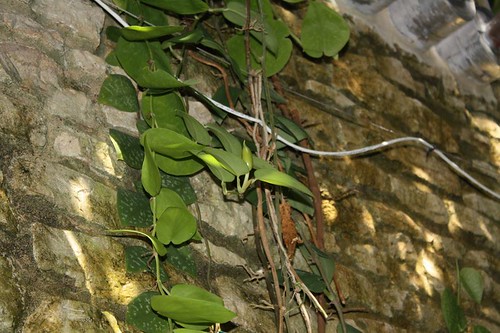 |
| The rare inflorescence of Scindapsus pictus |
Many people grow the
Scindapsus pictus, sometimes called Satin Pothos vine, in their homes. I have one on my desk at work and one in our dining room at home. In most cases, these plants are grown in hanging baskets, or just in regular pots. Rarely are they grown in a situation where they can scale a wall, as they like to do in nature. This "shingling" habit is their preferred growth type. Even in locations where they are grown shingling on a rock wall, they rarely bloom outside of their natural habitat. However, the plants growing in the FWBG conservatory have bloomed regularly. We got to see one of these early-stage inflorescences on Saturday. What impressed me was the shape of the inflorescence, almost spherical in comparison to most other Aroid blooms. It is also interesting that the plant blooms on pieces of the vine which have detached themselves from the wall where the rest of the plant is shingling.
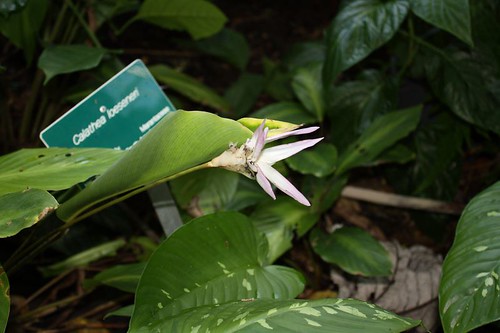 |
| Calathea loesneri bloom |
Calatheas are not known for their blooms, but for their foliage. However, there are a couple of
Calatheas that have very nice blooms (and much less interesting foliage). One of these is
Calathea loeseneri, which was in bloom this Saturday on our visit. I was lucky enough to get to take home one stem of this plant.
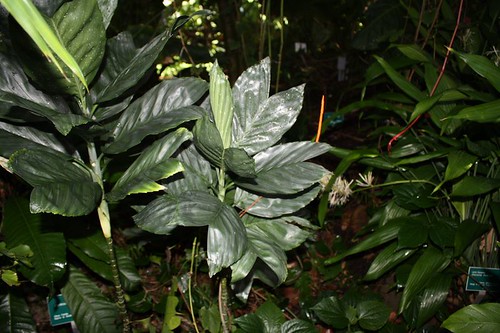 |
| Metallic fishtail palm (Chamaedorea metallica) |
The so-called Fishtail palms are given the common name designation because of the shape of their leaves. Usually these palms are smaller than the more typical palm specimens which reach towering heights of 70-100 feet. John told me that this particular palm (
Chamaedorea metallica) stays smaller and has colorful fronds, making it a good specimen for a houseplant. I really liked the silvery coloring of the leaves, no doubt the reason for it's species name of
metallica.
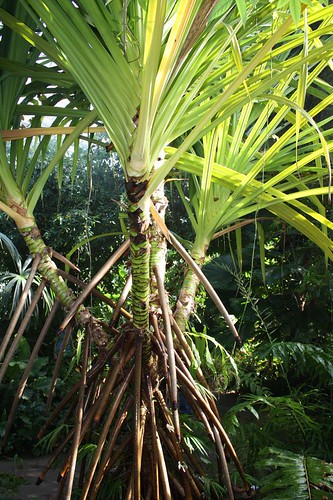 |
| Screwpine Palm (Pandanus) |
The Screwpine Palm (
Pandanus sp.) is interesting because of the gigantic roots which are sent out in all directions to support the large tree. The Screwpine growing in the FWBG conservatory was right next to the water and the roots which landed in water burst into thousands of smaller roots (below). I imagine the roots which burrow into the ground do something similar.
caught many people's eyes as we passed on our tour. Unfortunately, this plant did not have an ID tag anywhere in sight. Maybe I'll be able to get an ID online.













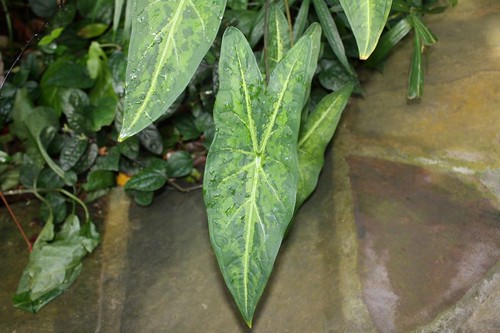
What a good time that was Zach, thanks so much for all the hard work you put into it!
ReplyDeleteWow! This is definitely a "must see" and I believe I know of how I could persuade someone to go to the Ft. Worth area. :) That screwtail pine is awesome----quite funkywinkerdeen!
ReplyDeleteDid you come back with some fun new plants?